Tips and techniques for first aid in the wilderness
When you are in the wilderness, injuries that are often just bothersome at home could make life extremely difficult and could even turn out to be life-threatening. You would be well advised to learn how to treat common injuries and make sure that you pack the necessary equipment to deal with them. It is possible to have all you need to take with you packed in a very compact container. You do not need large tubes or bottles or boxes full of medication. For example, just cut off a couple of tablets from a blister pack instead of taking the whole box.
You should consider packing the following:
A stretch bandage, a couple of sticking plasters, a couple of squares of gauze, a pair of tweezers and a small pair of sharp scissors, wound cleaner (a small bottle). Also include antiseptic cream, antifungal cream, headache pills, antihistamine pills, antacid pills, throat lozenges, blister treatment, burn dressing, and a triangular bandage. Add to your kit a small bottle of super glue – it has so many uses.
Common injuries experienced in the wild include:
- Insect or animal bites,
- broken bones,
- cuts,
- sprains,
- choking,
- allergies,
- heat exhaustion,
- hypothermia,
- blisters
- infections.
Choking
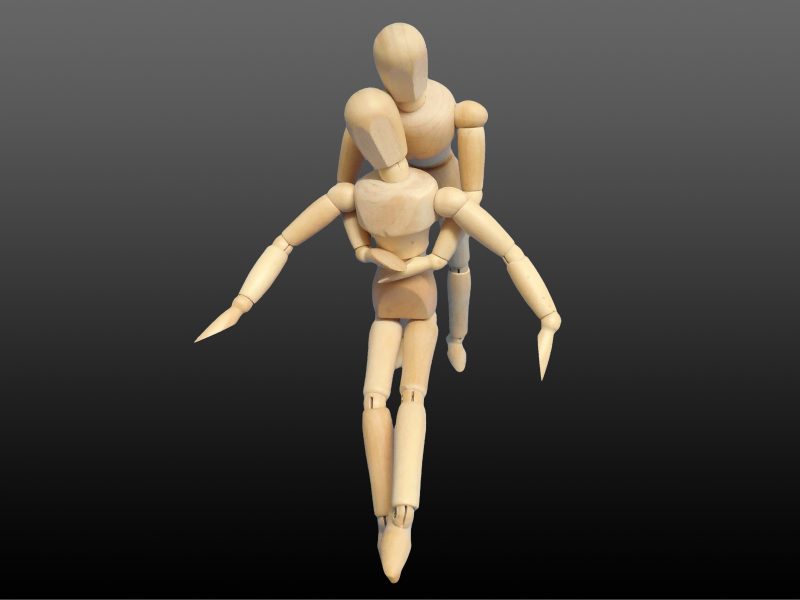
You should be familiar with the Heimlich maneuver, used in cases of choking. You need to grab the choking person from behind, holding your fist just between the rib cage and belly button. Hold your other hand over your fist and pull back hard and upwards towards the stomach. The item should become dislodged. This should only be done with adults. In the case of a small child needing help lay the child front down over your forearm. Cradle the child’s face in your hand putting your index finger and middle finger on either side of the mouth. Thump the child’s back. During the procedure, it is better to keep the child at a downward angle.
Skin burns
Sunburn or campfire burns are among the most likely types you may encounter on a hike or while camping. These need to be treated before they get infected. Try to keep the burn as cool as possible – using a hanky or bandage soaked in cool boiled water works well. Where the skin has been broken or it looks blackened, it is likely to be a third-degree burn. Sterile dressings must be applied immediately. Do not remove any clothing that is stuck onto a burn. Being burned causes dehydration and the patient should drink as much as possible. Medical help is required as soon as possible.
Cuts
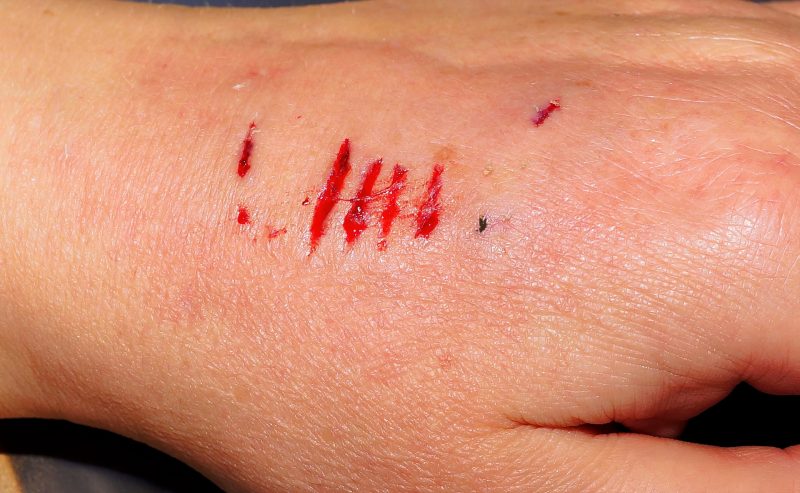
A common and unconventional way to deal with cuts out in the wilderness is to use superglue. Drop some onto a bleeding wound. The glue stops the blood almost immediately as it acts like a coagulant. It sets to seal the wound and keep it waterproof. This helps protect it from infection. The application does not cause additional pain.
Wounds
Where the wound is dangerous and deep, such as in the case of cut arteries or even amputations, you will need to place pressure on the wound and apply a tourniquet somewhere between the heart and the area of the wound by using a piece of cloth, a rope or belt, even vines. Tourniquets should only be used where loss of blood from the wound can cause loss of life. The wound needs to be checked regularly. Remove the tourniquet as soon as you can to prevent the loss of the limb.
Wild animal bites
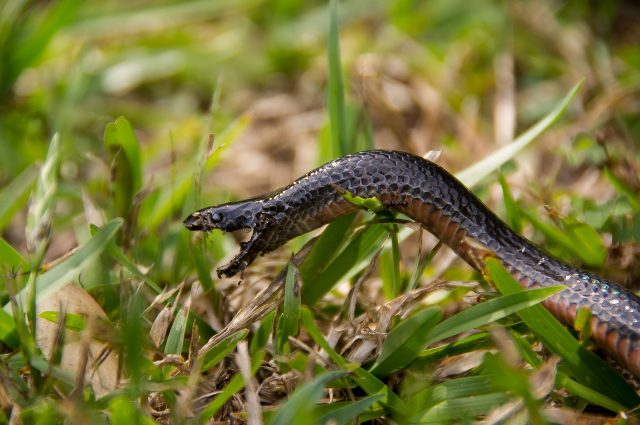
In the case of bites, for example, a snake bite, do not suck the wound. Not only can poison get into your mouth, you can infect the wound with bacteria from your mouth. You need to flush the bite with clean water and lift the area of the bite above the level of the heart to help slow down the movement of the poison around the body. Medical help will be needed as soon as possible.
Broken bones
If you need to treat a sprain or broken bone, the first step is to ensure the area is immobilized. The best way to do this is to make a splint. Wrap up the injured area with a cloth and use two strong sticks on each side of the break or sprain, tying these around securely.
Blisters
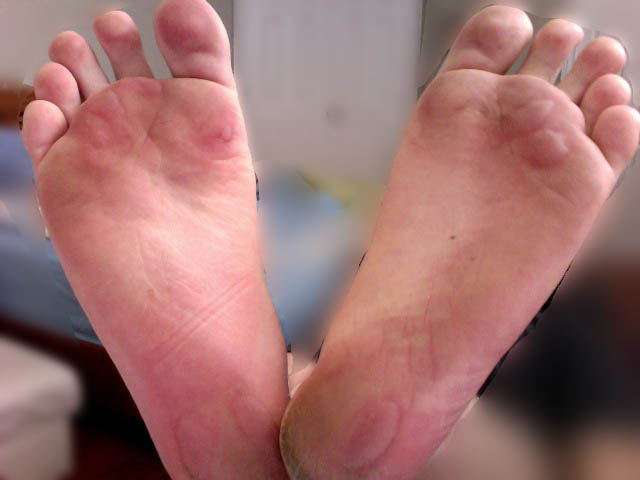
To help prevent blisters you should regularly change your socks. Keep your feet dry and be sure you are wearing well-fitted shoes. Smaller blisters can be protected with plasters. Care should be taken to prevent them from popping. Big blisters can be lanced and allowed to drain. Protect them with some padding under a bandage after applying antiseptic.
Infections
When a wound is swollen and red it is probably infected. If it is oozing pus this diagnosis is confirmed. Apply antibiotic ointment (you should have some in your kit). If you do not, clean the wound thoroughly with warm water. If the wound has grown closed it will have to be lanced with a sterile knife or needle. Less well known natural treatments which you may have with you are salt water, garlic, honey, or sphagnum moss, which is rich in iodine. Close with a clean dressing.
Heat exhaustion
Heat exhaustion is actually very serious. It is as if the body is slow cooking. The person needs to find shade, rest, and drink a lot of water.
Allergies
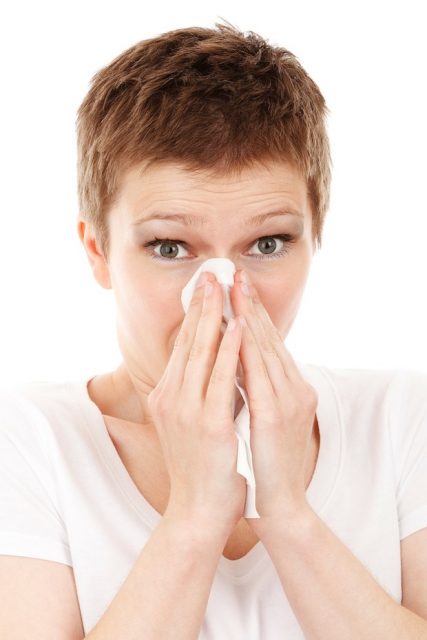
People often suffer allergic reactions to all manner of things in the wilderness and the best way to deal with these is with topical and/or oral antihistamines.
Hypothermia
The opposite problem to heat exhaustion is hypothermia. This happens where there is moisture present. While hypothermia is caused from being very cold, often because of being wet, the body needs to be warmed gradually. Doing this too fast can cause a shock reaction and cause the body to shut down completely. Your patient could die. Wet clothing needs to be removed and replaced with dry blankets or clothes. Serve warm (not hot) drinks and monitor their temperature.
All in all, it is best to be prepared but take care in the wilderness, and hopefully, your kit will return home unused.
If you have any comments then please drop us a message on our Outdoor Revival Facebook page
If you have a good story to tell or blog let us know about it on our FB page, we’re also happy for article or review submissions, we’d love to hear from you.
We live in a beautiful world, get out there and enjoy it. Outdoor Revival – Reconnecting us all with the Outdoors.





